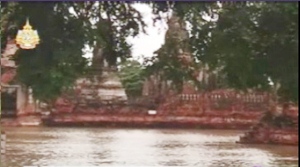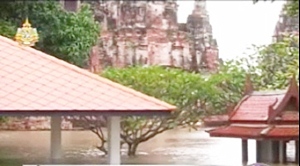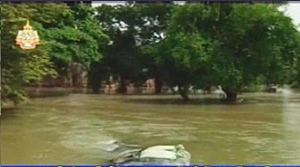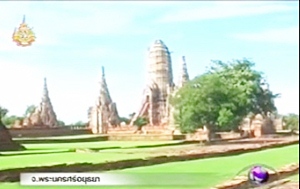Thailand’s flood has threatened the 370-year-old Chaiwatthanaram Temple, one of the country’s most famous tourist attractions, across the Chao Phraya River from Ayutthaya, the former capital of Siam, as local authorities are struggling to fight severe flooding to save the historic site.
Chaiwatthanaram Temple has been transformed into an island system submerged under two metres with the central prang and outlying stupas in deep water since Tuesday morning after a 60-metre section of the dyke in the temple perimeter collapsed due to torrential waterflow from the river.

Under the plan to save the World Heritage site and its 32 acre surroundings, the authorities are trying first to block further water intrusions by reinforcing the sandbag embankments and plugging the section of breached dyke before pumping out the flood water.
However, the attempt is tedious and time-consuming, a process obstructed by the swift, strong waterflow as flat-bottomed boats are able to reach the damaged dyke and carry only one sand bag at a time.

Built in 1630 in the late Ayutthaya period during the reign of King Prasart Thong, the temple has a striking architectural design unlike other temples in Ayutthaya.
The structure of the temple’s buildings is similar to that of Angkor Wat in Cambodia, symbolising Mount Sumeru, the holy mountain of Buddhist cosmology but the distinctive architectural style demonstrates the real Thai artistic workmanship.
The main chapel outside the cloister houses the principle Buddha image in the attitude of meditation representing the Lord Buddha when he attained enlightenment under the Maha Bodhi Tree on the banks of the Niranjana (now called Lilanja) River.

Wat Chaiwatthanaram was an important temple in Ayutthaya as it was a royal temple where kings and members of the royal family performed religious ceremonies.
During the reign of King Boromakot, the temple was used for cremation ceremonies for the royal family members and noblemen.





